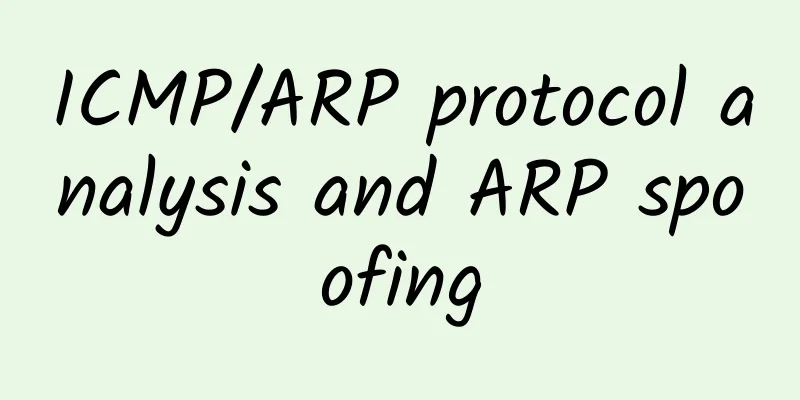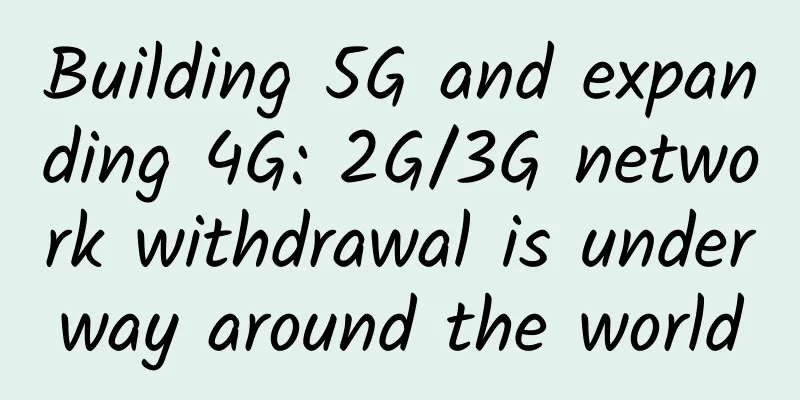ICMP/ARP protocol analysis and ARP spoofing

|
ICMP ICMP (Internet Control Message Protocol) is an Internet control message protocol. It is a sub-protocol of the TCP/IP protocol suite, used to transmit control messages between IP hosts and routers. Control messages refer to network messages such as whether the network is connected, whether the host is reachable, and whether the route is available. Although these control messages do not transmit user data, they play an important role in the transmission of user data. The functions of ICMP protocol are as follows:
ICMP messages are divided into two categories: one is ICMP query message; the other is ICMP error report message Common ICMP types The situation where ICMP error messages are not sent:
The ICMP protocol is often used in the ping and tracert commands:
For example: ICMP Destination Unreachable Look at the echo request and echo response messages icmp request icmp reply ARP Protocol Address Resolution Protocol (ARP) queries the MAC address of the target device by using the IP address of the target device. Communication process:
ARP parsing ARP Table Proxy ARP Proxy ARP generally uses a gateway device to respond to another device's ARP request using its own MAC address. Why do we need proxy ARP? First, you need to understand that one of the important functions of a router is to isolate broadcast domains and prevent the spread of broadcast packets, otherwise it will cause a network storm. The ARP request is a broadcast packet. If the target address is in the same LAN, a response will be received. But what if the target address is not in the same LAN? The router provides proxy ARP to solve this problem. Proxy ARP There are two hosts, PC1 and PC2. When PC1 sends an ARP request for PC2's MAC address, the ARP request can only reach the router because the router does not forward broadcast packets. If the router has the proxy ARP function enabled and knows that PC2 belongs to the network it is connected to, the router will use its own interface's MAC address instead of PC2's MAC address to make an ARP reply to the host PC1. RARP Protocol The Reverse Address Resolution Protocol allows a physical machine on a LAN to request its IP address from the ARP table or cache of a gateway server, i.e. to find an IP address based on its MAC address. RARP Free ARP When obtaining or changing an IP address, an ARP is sent out, but the target IP of the request is local. A host can use it to determine whether another host has the same IP address. Normally, sending a free ARP request will not receive an ARP reply. If an ARP reply is received, it means that there is a host with the same IP address as the local host in the network, and an address conflict has occurred. ARP spoofing A forged gateway MAC address and IP address correspondence table is broadcasted to other hosts in the LAN through broadcasting. After receiving this forged information, other hosts in the LAN will update their ARP tables. In this way, when these hosts send packets outward, although they will send packets according to the correct gateway IP address, they are actually sent to a wrong MAC address, resulting in the inability to send packets out, resulting in the inability to access the Internet, etc. You can set a static MAC->IP mapping table to stop receiving broadcast ARP information. |
<<: Do you know the ins and outs of threads?
>>: The Secret of Online Physical Examination Technology (Part 1)
Recommend
Wide Area Networks: What You Need to Know in the Internet of Things Era
The total global IoT spending is estimated to rea...
The co-chair of the IPv6 Working Group pointed out the root cause of the slow development of IPv6 in one sentence!
Today, the Internet world is slowly transitioning...
What are the benefits of restarting a wireless router? Faster Internet access!
Wireless routers have become an indispensable net...
Electronic Port "shines the border" - see the operation and maintenance of the Urumqi branch of China Electronic Port Data Center "New Silk Road"
【51CTO.com article】 As the infrastructure of elec...
In the 5G era, what is the way out for the three major operators that are crying poor?
As 2017 was coming to an end, news about 5G becam...
Three years after the license was issued, has 5G commercialization been successful?
It coincides with the third anniversary of China...
Blockchain cross-domain security solution
1. Evolution of blockchain development Looking ba...
CloudCone: $17.99/year KVM-1GB/50GB/1TB/Los Angeles MC Data Center
CloudCone sent an email at the beginning of the m...
Ministry of Industry and Information Technology: Hangzhou Asian Games opening ceremony pioneered 5G ultra-dense networking solution, with seamless network coverage of venues
"Industry and Information Technology V News&...
Analysis: The battle for existing capacity is becoming more and more obvious, and the role of broadband may become more prominent
The continuous loss of mobile phone users has bec...
[6.18] DediPath: $30/month-E3-1240v2, 16GB memory, 2TB hard disk, 1Gbps unlimited traffic/Los Angeles data center
DediPath launched a Father's Day Sale. Becaus...
Canada to launch 3500MHz 5G spectrum auction
According to foreign media reports, Canada will l...
Security Theory: Learn how to respond to cyber terrorism
[51CTO.com Quick Translation] There has been a lo...
Dish signs 10-year AT&T network service deal worth $5 billion
US satellite TV operator Dish Network has signed ...
Cisco's Wei Songbin: ACI and HyperFlex dual innovations make data centers ubiquitous
[Original article from 51CTO.com] When you mentio...









